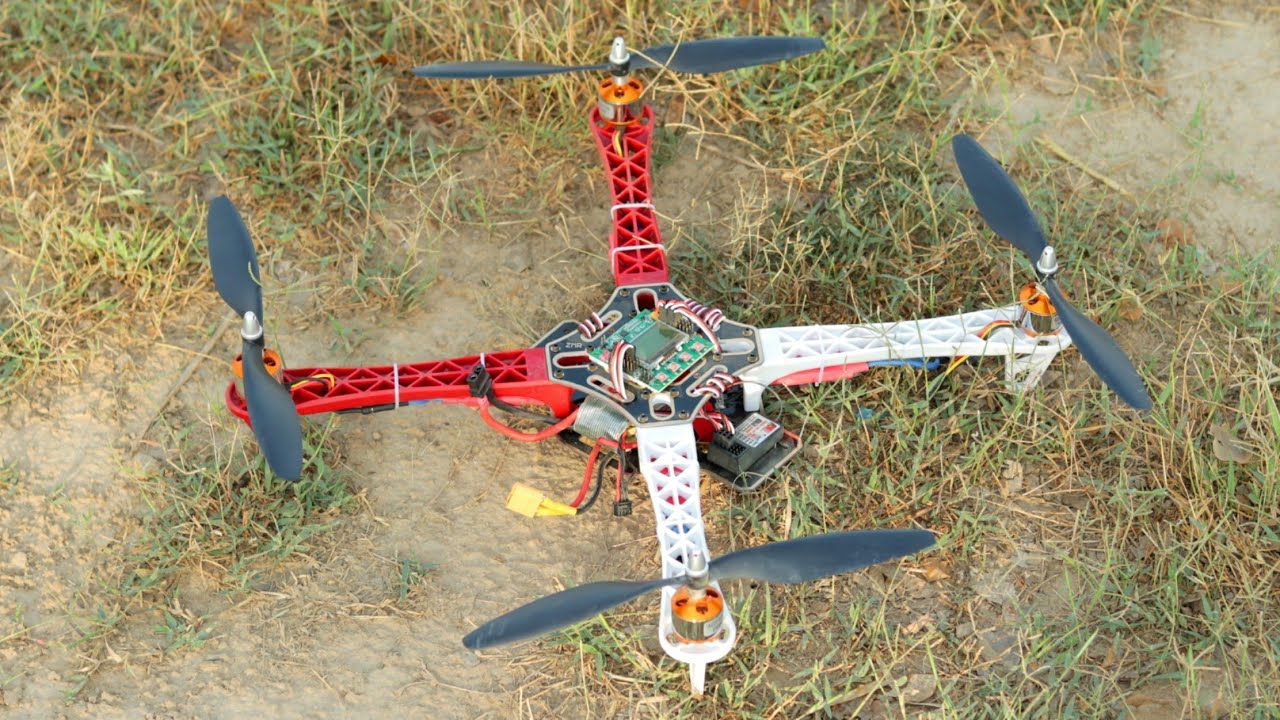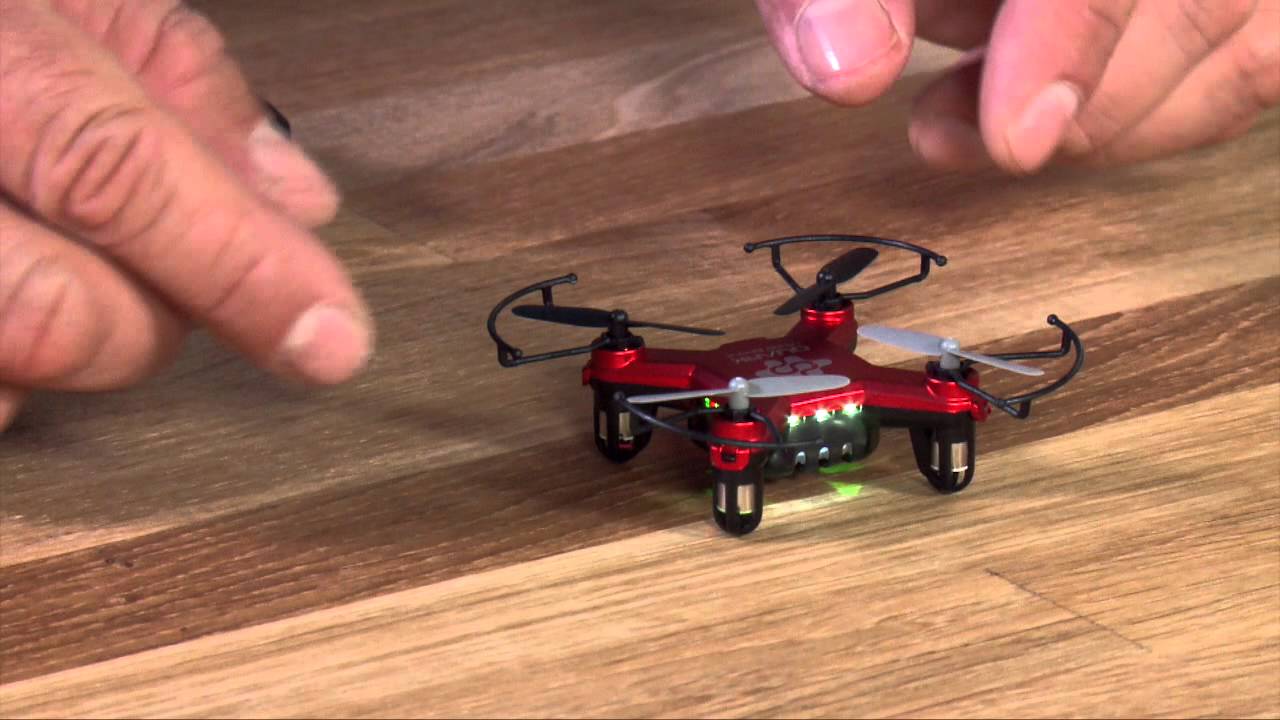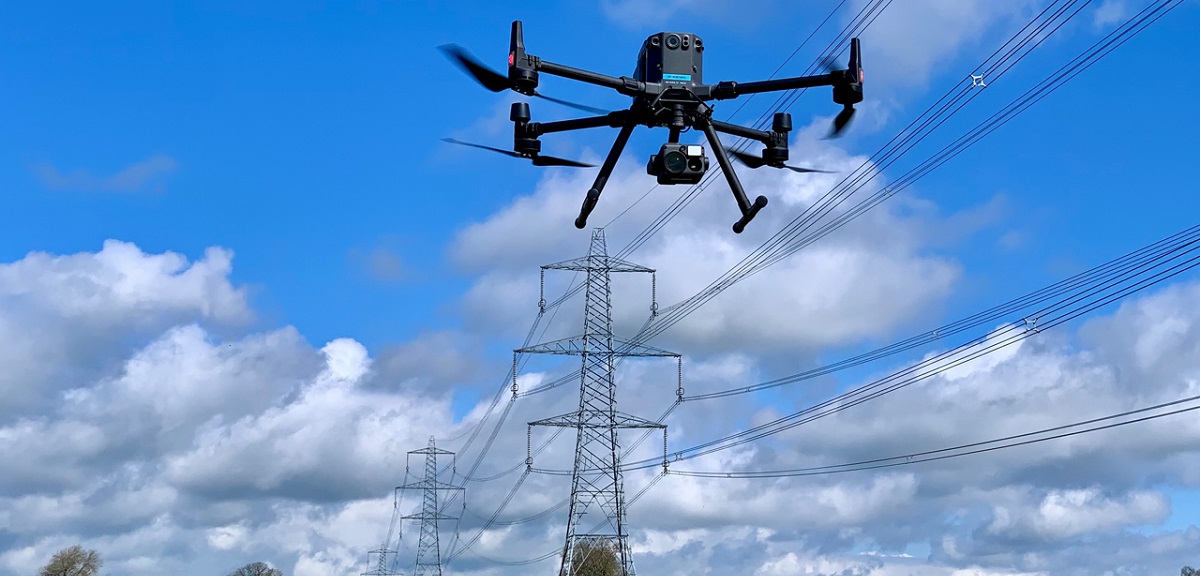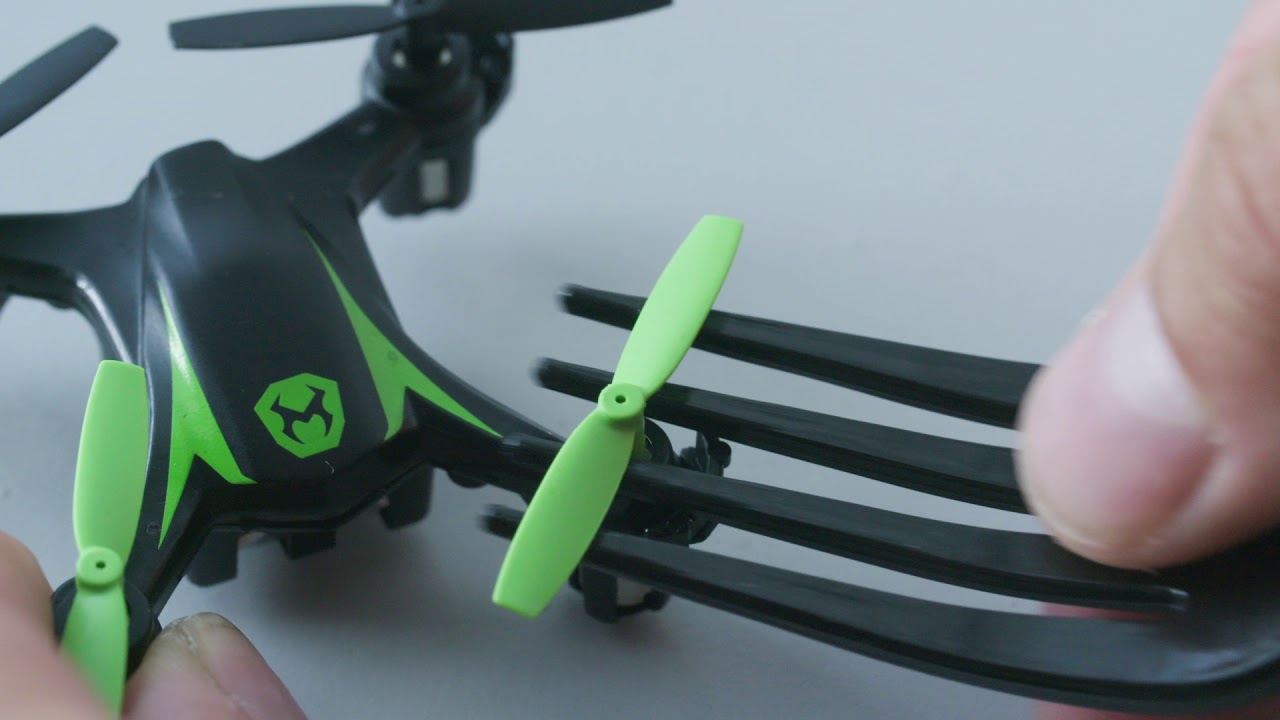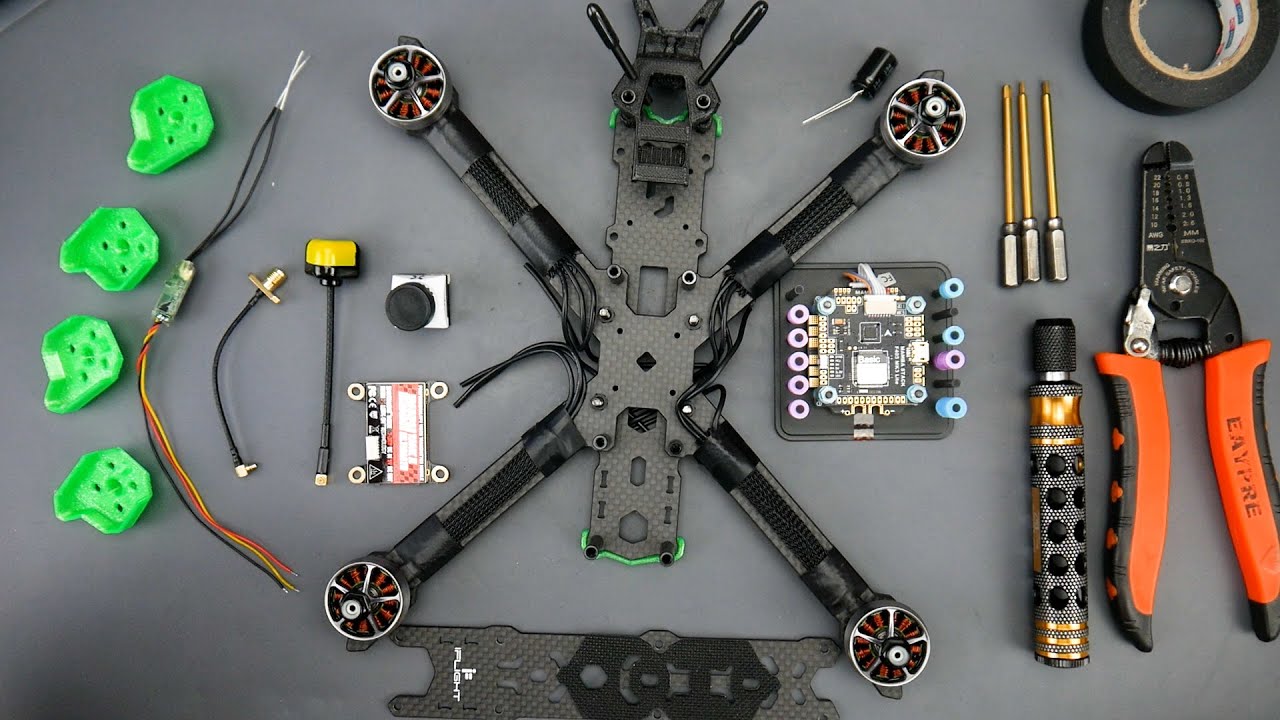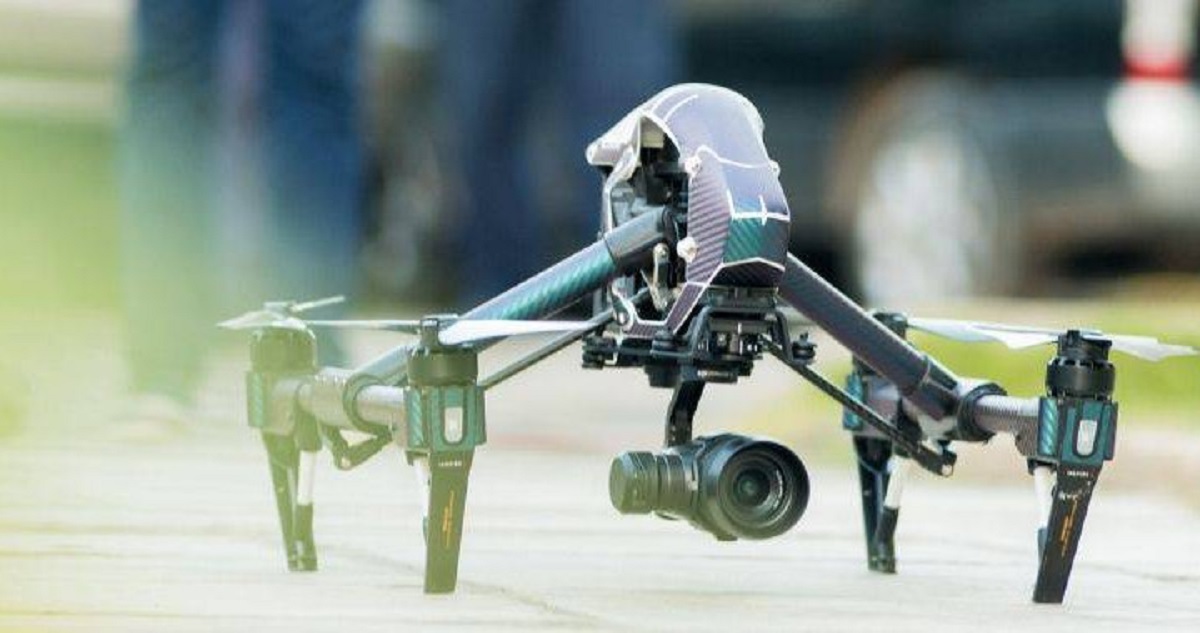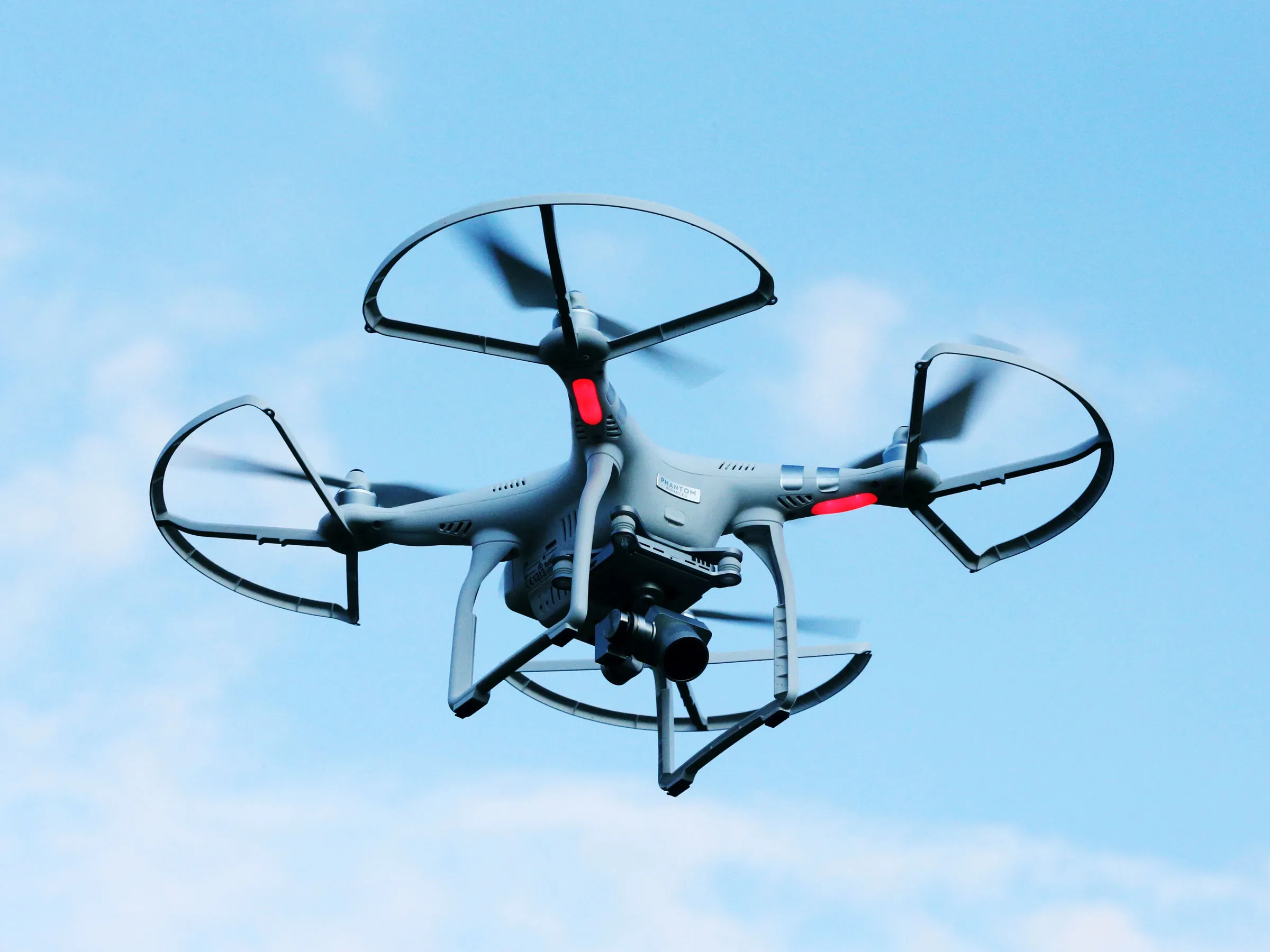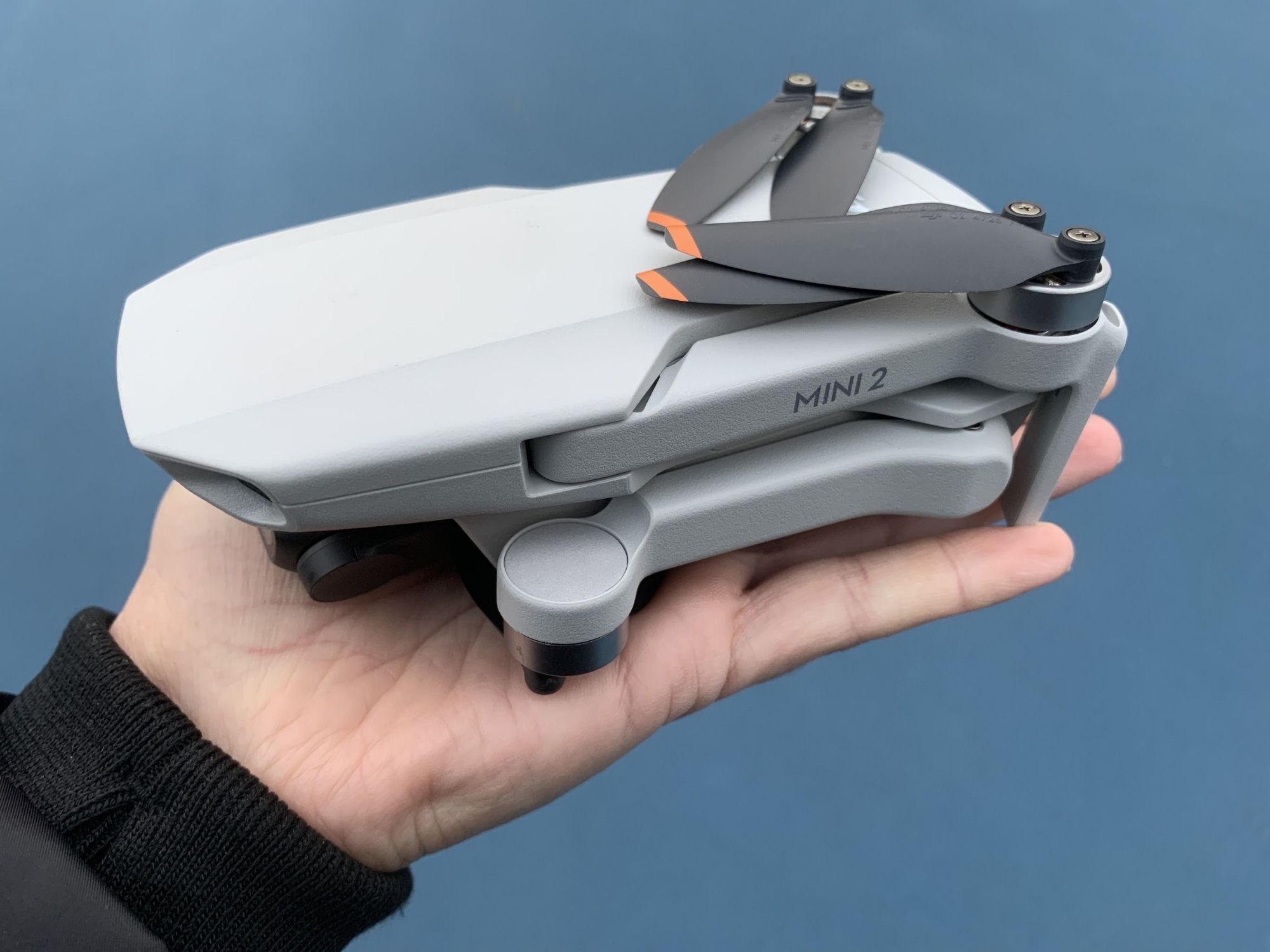Introduction
Welcome to the fascinating world of drone propellers. Drones, also known as unmanned aerial vehicles, have become increasingly popular in recent years as a recreational hobby, as well as for professional use in various industries. Whether you’re a drone enthusiast or just curious about how these amazing devices work, understanding the mechanics of drone propellers is key.
Drone propellers play a crucial role in the overall performance and functionality of these aerial vehicles. They are responsible for generating the necessary lift to keep the drone airborne and maneuvering through the sky. They work in tandem with other components, such as the motors and flight controller, to ensure stable flight and precise control.
In this article, we will dive into the world of drone propellers, exploring their design, structure, and working principle. We will also discuss the materials used in their construction and the factors that affect their performance. Additionally, we’ll explore the different types of propellers available in the market and provide tips for choosing the right ones for your specific drone.
Whether you’re a beginner looking to understand the basics of drone propellers or a seasoned drone pilot seeking to enhance your knowledge, this article will serve as a comprehensive guide to help you grasp the intricacies of these essential components.
So, let’s embark on this exciting journey into the realm of drone propellers and uncover the secrets behind their remarkable performance and flight capabilities.
Basic Components of a Drone
Before delving into the specifics of drone propellers, it’s essential to have a basic understanding of the various components that make up a drone. While drone designs can vary, most drones share common fundamental components that enable them to function effectively.
The main components of a drone include:
1. Frame: The frame serves as the skeletal structure of the drone, providing support and housing for the other components. It is typically made of lightweight materials such as carbon fiber or plastic to ensure optimal maneuverability.
2. Motors: Drones are equipped with multiple motors, usually four or more, which are responsible for powering the propellers. These motors generate the necessary thrust to lift the drone off the ground and keep it airborne.
3. ESC (Electronic Speed Controller): The ESC controls the speed and direction of each motor. It receives signals from the flight controller and adjusts the power supplied to the motors accordingly.
4. Flight Controller: The flight controller acts as the brain of the drone, processing user inputs and sensor data to stabilize and control the drone’s flight. It uses algorithms and sensors such as gyroscopes and accelerometers to maintain stability and execute flight maneuvers.
5. Battery: The battery provides the necessary electrical power to the drone’s motors and other electronic components. Lithium-ion batteries are commonly used due to their high energy density and lightweight properties.
6. Propellers: The propellers are an integral part of a drone’s propulsion system. They convert the rotational motion generated by the motors into thrust, enabling the drone to move through the air.
7. Transmitter and Receiver: The transmitter is the handheld controller used by the pilot to send commands to the drone, while the receiver installed on the drone receives and interprets these commands, relaying them to the flight controller.
All these components work together seamlessly to ensure the proper functioning and control of the drone. Understanding the roles and interactions of these components is essential for both beginners and experienced drone enthusiasts.
Now that we have familiarized ourselves with the basic components of a drone, let’s take a closer look at the propellers – the driving force behind a drone’s flight.
Overview of Drone Propellers
Drone propellers, also known as rotor blades or simply props, are vital components that facilitate the movement and control of a drone in the air. They are designed to generate thrust, which enables the drone to ascend, descend, and maneuver in different directions. Understanding the key aspects of drone propellers is crucial for optimizing the performance and flight characteristics of your drone.
Propellers are typically composed of two or more blades connected to a central hub. The number of blades can vary depending on the intended use and design of the drone. While quadcopters usually have four blades, other types of drones, such as hexacopters or octocopters, may have six or eight blades for increased stability and lifting capacity.
The size of a drone propeller is usually denoted by two numbers, such as 5×3 or 10×4.5. The first number represents the diameter of the propeller, which is the distance from one side of the propeller blade to the other. The second number indicates the pitch, which represents the distance the propeller would theoretically move forward in one complete rotation.
Drone propellers are available in various materials, with the most common being plastic, carbon fiber, and even wood. The choice of material depends on factors such as strength, durability, and flexibility. Plastic propellers are lightweight and cost-effective, making them suitable for beginner drones and casual flying. Carbon fiber propellers, on the other hand, are stiffer and offer enhanced performance and efficiency, making them ideal for professional and high-performance drones.
The design of a propeller is crucial as it directly impacts the drone’s aerodynamic characteristics, including stability, maneuverability, and efficiency. Propellers are designed with specific airfoil profiles and blade shapes to optimize lift, reduce drag, and generate efficient thrust. The angle of attack of the propeller blades, known as the pitch, can also be adjusted to fine-tune the drone’s flight characteristics.
It’s important to note that drone propellers are not interchangeable. Each drone model has unique specifications and requirements for propeller size, mounting mechanism, and rotation direction. It is crucial to use propellers specifically designed for your drone model to ensure compatibility and optimal performance.
Now that we have gained a general understanding of drone propellers, let’s explore the significance of these components and the role they play in the overall performance of a drone.
Importance of Drone Propellers
Drone propellers are of utmost importance when it comes to the overall performance and flight capabilities of a drone. They have a significant impact on crucial aspects such as maneuverability, stability, efficiency, and payload capacity. Understanding the importance of drone propellers can help you make informed decisions when selecting the right propellers for your drone.
One of the primary roles of drone propellers is to generate thrust, which enables the drone to lift off the ground and maintain stable flight. The propellers convert the rotational motion created by the motors into thrust, propelling the drone through the air. The design, size, and pitch of the propellers influence the amount of thrust generated, and therefore, directly impact the drone’s ability to take off, hover, and maneuver.
Propellers also play a crucial role in the stability and control of the drone. The carefully designed airfoil profiles and blade shapes of the propellers help in generating lift and reducing drag. This allows the drone to maintain a stable flight and execute precise movements, such as turns, ascents, and descents. Properly balanced propellers also minimize vibrations, ensuring smooth and stable footage for drones equipped with cameras.
Another important aspect to consider is the efficiency of the propellers. Efficient propellers maximize the thrust generated while minimizing power consumption, thus improving flight time. This is crucial, especially for drones used in professional applications such as aerial photography, surveying, or package delivery, where longer flight times are desired.
The payload capacity of a drone is also influenced by the propellers. Larger and more powerful propellers can generate higher thrust, enabling the drone to carry heavier payloads such as professional-grade cameras or specialized sensors. It’s essential to choose propellers that can handle the weight of the payload without compromising the drone’s stability or flight performance.
Furthermore, the noise level produced by the propellers is an important consideration, especially for drones used in residential areas or film production. Propellers with efficient design and low vibration characteristics tend to produce less noise, making them suitable for applications that require a quieter operation.
Overall, drone propellers are vital components that significantly impact the performance, stability, maneuverability, efficiency, and payload capacity of a drone. Understanding their importance and selecting the right propellers for your specific drone model is essential for achieving optimal flight performance and enhancing your aerial experience.
Design and Structure of Drone Propellers
The design and structure of drone propellers are critical elements that directly impact the performance, efficiency, and stability of a drone. Propellers are carefully engineered to achieve optimal lift, minimize drag, and generate efficient thrust. Understanding the design and structure of drone propellers can help you make informed decisions when selecting the right propellers for your drone.
Propellers are typically composed of two or more blades connected to a central hub. The number of blades can vary depending on the drone’s design and intended use. Common configurations include two-blade, three-blade, and four-blade propellers. Each configuration has its advantages and trade-offs in terms of performance, stability, and efficiency.
The shape of the blades is a critical factor in propeller design. Drone propellers often have an airfoil shape, similar to that of an airplane wing. This airfoil shape helps to generate lift and reduce drag during rotation. The angle of attack and curvature of the blades are designed to create a pressure differential between the upper and lower surfaces, creating lift as the propellers spin.
The size of the propellers is another important consideration. The diameter of the propeller refers to the total length from one side of the blade to the other. Larger propellers generally generate more thrust, making them suitable for heavy-lifting drones or applications that require increased stability. Smaller propellers, on the other hand, are often used in smaller and lighter drones that prioritize agility and maneuverability.
The pitch of the propellers also plays a crucial role in their design. The pitch refers to the theoretical forward movement of the propeller in one complete rotation. A higher pitch propeller will generate more thrust but may require more power from the motors. Conversely, a lower pitch propeller will require less power but may generate less thrust.
In addition to the blade design, the material used in the construction of the propellers is also essential. The most common materials used for drone propellers are plastic, carbon fiber, and wood. Plastic propellers are lightweight, cost-effective, and suitable for beginner drones or casual flying. Carbon fiber propellers, on the other hand, are lightweight, rigid, and offer improved efficiency and performance, making them ideal for professional and high-performance drones.
It’s important to note that drone propellers are not interchangeable between different drone models. Each drone has specific requirements for the size, mounting mechanism, and rotation direction of the propellers. It’s crucial to use propellers specifically designed for your drone to ensure compatibility, optimal performance, and safe operation.
Understanding the design and structure of drone propellers can help you select the right propellers that align with your drone’s requirements and intended use. By choosing propellers that are designed to maximize performance, stability, and efficiency, you can unlock the full potential of your drone and elevate your aerial experience.
Material Used in Drone Propellers
The material used in the construction of drone propellers is a key factor that influences their performance, durability, and overall flight characteristics. Different materials offer varying levels of strength, flexibility, and efficiency. Understanding the properties of the materials commonly used in drone propellers can help you make informed decisions when selecting the right propellers for your drone.
1. Plastic: Plastic propellers are widely used in drones, thanks to their lightweight nature and cost-effectiveness. They are typically made from materials such as nylon or polycarbonate. Plastic propellers offer good performance for beginner-level drones or casual flying. However, they may be more prone to damage or breakage in high-stress situations or collisions.
2. Carbon Fiber: Carbon fiber propellers are known for their excellent strength-to-weight ratio and rigidity. They are constructed using layers of carbon fiber material that are bonded together to form a strong, stiff structure. Carbon fiber propellers are commonly used in professional and high-performance drones, as they provide enhanced efficiency, stability, and performance. They are more resistant to bending or flexing under heavy loads or high-speed rotations.
3. Wood: Wood propellers, although less common nowadays, were widely used in the early days of drone development. They are typically made from lightweight and sturdy types of wood, such as balsa wood. Wood propellers offer natural vibration dampening properties and can be an excellent choice for vintage or DIY drone projects. However, their susceptibility to moisture and changes in environmental conditions can impact their durability and performance.
When selecting a material for your drone propellers, it’s important to consider factors such as the intended use, desired performance, and budget. Plastic propellers are a suitable option for beginners or casual flying, offering affordability and versatility. Carbon fiber propellers, while more expensive, provide improved performance, stability, and efficiency, making them ideal for professional applications or high-performance drones.
It’s crucial to ensure that the chosen propellers match the specifications and requirements of your drone, including the size, mounting mechanism, and rotation direction. Using propellers that are specifically designed for your drone model will ensure optimal performance, compatibility, and safe operation.
By understanding the materials used in drone propellers and their respective characteristics, you can make an informed decision when selecting propellers that complement your drone’s requirements and enhance its overall flying capabilities.
Working Principle of Drone Propellers
The working principle of drone propellers is based on the fundamental principles of aerodynamics and the generation of lift. Propellers play a vital role in creating the necessary thrust that enables a drone to take off, hover, and maneuver through the air with precision. Understanding the working principle of drone propellers can provide insights into how these components facilitate the flight of drones.
When the drone’s motors spin the propellers, they create a rotational motion. The blades of the propellers have an airfoil shape, similar to an airplane wing. As the propellers rotate, the air flows over the curved surfaces of the blades, creating different pressure distributions on the top and bottom surfaces, according to Bernoulli’s principle. This pressure difference generates lift, allowing the drone to overcome gravity and stay airborne.
The lift generated by the propellers is also influenced by the pitch of the blades. The pitch refers to the angle at which the blades are positioned relative to the rotation plane. A higher pitch propeller will create more thrust, but may require greater power from the motors to rotate at higher speeds. Conversely, a lower pitch propeller requires less power but generates less thrust.
The rotational motion of the propellers creates an upward force known as thrust. This thrust is what pushes the drone upwards and counteracts the force of gravity. The amount of thrust produced is determined by various factors such as the size, shape, and pitch of the propellers, as well as the power and speed at which the motors rotate.
Drone propellers also provide yaw control, which allows the drone to rotate around its vertical axis. By varying the speed of rotation of the propellers on opposite sides of the drone, a torque is created that causes the drone to turn left or right, enabling smooth and controlled turns during flight.
It’s important to note that the performance of drone propellers can be affected by factors such as altitude, air density, temperature, and even weather conditions. Higher altitudes and lower air densities will impact the propellers’ ability to generate thrust efficiently. In colder temperatures, the air may be denser, resulting in improved lift and performance compared to warmer temperatures.
Understanding the working principle of drone propellers highlights their crucial role in flight. The design, pitch, and rotation of the propellers directly influence the efficiency, stability, and maneuverability of the drone. By selecting the right propellers and optimizing their operation, you can enhance the performance and flight characteristics of your drone.
How Drone Propellers Generate Lift
Drone propellers play a fundamental role in generating the lift required for a drone to overcome gravity and stay airborne. Lift is the force that opposes the force of gravity, allowing the drone to ascend and remain in flight. Understanding how drone propellers generate lift provides insights into the mechanics behind a drone’s ability to fly.
The lift generated by drone propellers is based on the principles of aerodynamics, specifically Bernoulli’s principle. As the propellers rotate, they create a flow of air around the blades. The blades have an airfoil shape, similar to that of an airplane wing. This means that the top surface of the propeller blade is curved, while the bottom surface is comparatively flatter.
According to Bernoulli’s principle, as the air flows over the curved surface of the propeller blade, it accelerates and creates lower pressure compared to the air flowing underneath the blade. This pressure difference creates lift, as the higher pressure on the bottom surface pushes the drone upwards, opposing the force of gravity.
In addition to the aerodynamic shape of the propellers, other factors contribute to the generation of lift. One crucial factor is the speed at which the propellers rotate. The faster the rotation, the greater the airflow and the resulting lift generated. This is why drones require powerful motors to spin the propellers at high speeds.
The pitch of the propeller blades also influences lift generation. A higher pitch angle, where the blades have a steeper angle of attack, can create more lift but may require more power to rotate at higher speeds. Conversely, a lower pitch angle requires less power but generates less lift.
The size and design of the propellers also play a role in lift generation. Larger propellers can move a larger volume of air, generating more lift. Furthermore, the shape of the propeller blades, including their curvature and twist, affects the efficiency and effectiveness of lift generation.
It’s important to note that the lift generated by drone propellers is not solely responsible for keeping the drone airborne. The weight of the drone, as well as the thrust generated, also play critical roles in maintaining stable flight. The thrust produced by the propellers must be greater than the weight of the drone to sustain flight and maneuver effectively.
By understanding how drone propellers generate lift, drone enthusiasts can appreciate the intricate mechanics behind a drone’s flight. The shape, speed, pitch, and size of the propellers all contribute to lift generation. This knowledge can guide the selection and optimization of propellers for various drones, improving their performance and flight characteristics.
Factors Affecting Drone Propeller Performance
The performance of drone propellers is influenced by various factors that can significantly impact the overall flight characteristics and efficiency of a drone. Understanding these factors is crucial for optimizing the performance and ensuring the safe operation of your drone. Let’s explore the key factors that affect drone propeller performance:
1. Propeller Size: The size of the propellers, specifically the diameter, directly affects the thrust generated by the drone. Larger propellers can move a larger volume of air, resulting in higher thrust and lifting capacity. However, larger propellers may also require more powerful motors and increased battery consumption.
2. Propeller Pitch: The pitch of the propellers, or the angle at which the blades are set, affects the drone’s speed and acceleration. Higher pitch propellers can generate more thrust and speed but may require more power from the motors. Lower pitch propellers offer better control and stability but sacrifice speed.
3. Motor Power: The power output of the drone’s motors directly impacts the propeller’s rotation speed and the thrust it generates. More powerful motors can spin the propellers at higher speeds, resulting in increased thrust and better performance. It’s essential to ensure that the motors are matched appropriately with the propellers to achieve optimal performance and efficiency.
4. Air Density: The density of the air surrounding the drone affects the propeller’s performance. Higher air density provides better lift and response from the propellers, resulting in improved flight performance. Lower air density at higher altitudes or in extreme weather conditions can reduce the efficiency and lifting capacity of the propellers.
5. Drone Weight: The weight of the drone, including the payload, affects how the propellers must work to generate enough thrust to lift and maneuver the drone. Heavier drones require more powerful motors and larger propellers to provide adequate lift. It’s crucial to consider the weight of the drone when selecting propellers to ensure optimal performance and stability.
6. Environmental Conditions: External factors such as wind speed, temperature, and humidity can influence propeller performance. Strong winds can impact the drone’s ability to maintain stability and control, while extreme temperatures or high humidity can affect the lift and efficiency of the propellers. It’s important to be aware of and adjust for these conditions when operating your drone.
7. Propeller Material: The material from which the propellers are made can affect their performance and durability. Different materials, such as plastic or carbon fiber, offer varying levels of strength, flexibility, and efficiency. Carbon fiber propellers are generally stiffer and provide improved performance, while plastic propellers are lightweight and cost-effective.
Considering these factors and their impact on propeller performance is crucial for optimizing the flight capabilities and efficiency of your drone. By selecting the right propellers, matching them with suitable motors, and accounting for environmental conditions, you can enhance the overall performance and control of your drone.
Types of Drone Propellers
Drone propellers come in various types, each designed to cater to specific needs and flight requirements. Understanding the different types of drone propellers can help you choose the most suitable ones for your drone and optimize its performance. Let’s explore some common types of drone propellers:
1. Standard Propellers: Standard propellers are the most common type used in drones. They typically have two or more blades with a straight design. These propellers provide a balance between lift, efficiency, and stability. They are suitable for general-purpose use and are often found on beginner and mid-range drones.
2. Folding Propellers: Folding propellers offer added convenience and portability. They feature hinged blades that can be folded against the motor arms when not in use. This design allows for easier storage and transportation of the drone. Folding propellers are commonly found on compact and portable drones.
3. Tapered Tip Propellers: Tapered tip propellers have blades that are narrower at the tip and wider at the root. This design helps reduce air resistance and increases efficiency. Tapered tip propellers are often used in high-performance drones and can provide improved maneuverability and speed.
4. Tri-Blade Propellers: Tri-blade propellers have three blades instead of the standard two. The additional blade provides increased stability and lifting capacity. Tri-blade propellers are commonly used in heavy-lift drones or those requiring enhanced stability, such as for carrying cameras or for acrobatic maneuvers.
5. Quad-Blade Propellers: Quad-blade propellers go a step further with four blades, offering even more stability and lifting power compared to tri-blade propellers. The extra blades allow for increased maneuverability and control, making quad-blade propellers suitable for advanced aerial photography or precise flight applications.
6. Self-Tightening Propellers: Self-tightening propellers feature a special design that ensures the propellers stay securely attached to the motor shaft during flight. This reduces the risk of the propellers coming loose during operation. Self-tightening propellers provide added safety and peace of mind, particularly for drones used in more demanding and high-risk scenarios.
7. Performance-Enhancing Propellers: Some manufacturers offer specialized performance-enhancing propellers, designed to improve specific aspects of drone flight. These can include propellers with different airfoil shapes, hybrid designs combining features of different propellers, or even custom-made propellers tailored for specific drone models. Performance-enhancing propellers are often used by professional drone pilots or those seeking to maximize the capabilities of their drones.
It’s important to note that not all types of propellers are compatible with every drone model. The drone’s specifications and requirements, including propeller size, rotation direction, and mounting mechanism, must be considered when choosing the appropriate propellers.
By exploring the different types of drone propellers available, you can determine which ones best suit your specific needs and flight requirements. The type of propeller you choose can have a significant impact on the performance, stability, and maneuverability of your drone, enabling you to optimize your aerial experience.
Tips for Choosing the Right Drone Propeller
Choosing the right drone propeller is essential for optimizing the performance, stability, and overall flight characteristics of your drone. With so many options available, it can be challenging to determine which propellers are best suited for your specific drone model and flying needs. To help you make an informed decision, consider the following tips when selecting drone propellers:
1. Refer to the Drone Manufacturer’s Recommendations: Start by checking the drone manufacturer’s recommendations for compatible propellers. They often provide specifications and guidelines that ensure optimal performance and compatibility. Adhering to their recommendations can help you avoid potential issues and ensure the best performance for your drone.
2. Consider Flight Requirements: Determine the type of flying you intend to do with your drone. Are you looking for speed and agility, or do you prioritize stability and steady flights? Different propellers will offer varying performance characteristics, so it’s crucial to align your propeller choice with your specific flight requirements.
3. Size and Pitch: Consider the size and pitch requirements specified by the drone manufacturer. Choosing propellers with the correct size and pitch ensures that they generate sufficient thrust and are compatible with the motor power of your drone. Incorrectly sized propellers can lead to suboptimal performance, excessive power consumption, and even damage to motors.
4. Airfoil Design: Look for propellers with well-designed airfoils, as they can significantly impact performance and efficiency. Airfoils that are designed to reduce drag and improve lift can enhance the stability and maneuverability of your drone. Consider tapered, swept-back, or specialized airfoil shapes that match your flying needs.
5. Material and Durability: Consider the material used in the propeller construction. Plastic propellers are lightweight and cost-effective, while carbon fiber propellers offer superior strength, rigidity, and efficiency. Evaluate your budget, flying conditions, and the level of durability required for your drone to select the most suitable material.
6. Consider Environmental Factors: Take into account the environmental conditions in which you will be flying. If you anticipate flying in windy conditions, consider propellers with a higher thrust to maintain stability. Similarly, if you’ll be flying at higher altitudes, choose propellers that can compensate for the thinner air density.
7. Experiment and Fine-Tune: Don’t be afraid to experiment with different propeller options. Every drone and flying scenario is unique, and finding the perfect propeller setup may require some trial and error. Consider purchasing a set of propellers with different sizes or pitches to fine-tune your drone’s performance based on your specific needs.
Remember, it’s vital to follow proper safety procedures when changing or installing propellers. Always power off your drone and ensure that the propellers are securely attached before flight. Additionally, regularly inspect and maintain your propellers to detect any signs of wear or damage that may affect their performance.
By considering these tips and factors, you can choose the right propellers for your drone, enabling you to maximize performance, stability, and overall flight experience.
Maintenance and Care for Drone Propellers
Maintaining and caring for your drone propellers is crucial for ensuring optimal performance, longevity, and safe operation of your drone. Proper maintenance practices can help extend the lifespan of your propellers and prevent potential issues. Here are some essential tips for maintaining and caring for your drone propellers:
1. Regular Inspection: Before and after each flight, inspect your propellers for any signs of damage or wear. Look for cracks, chips, or deformation in the blades. Ensure that the propellers are securely attached to the motor mounts.
2. Cleanliness: Keep your propellers clean from dirt, dust, and debris. Accumulated debris on the propellers can affect their balance and performance. Clean the propellers using a soft brush or cloth, or use compressed air to remove any particles.
3. Balance Check: Propeller balance is crucial for smooth and stable flight. Imbalanced propellers can cause vibrations and impact the performance of your drone. Regularly balance the propellers using a propeller balancing tool to ensure even weight distribution.
4. Propeller Replacement: If you notice significant damage to your propellers or signs of excessive wear, it’s important to replace them. Flying with damaged or worn propellers can compromise the performance, stability, and safety of your drone.
5. Propeller Storage: Store your propellers in a safe and dry location, away from direct sunlight or extreme temperatures. Use protective cases or storage containers to prevent accidental damage during transportation or storage.
6. Motor Maintenance: Proper motor maintenance can indirectly contribute to propeller care. Keep the motor bearings lubricated according to the manufacturer’s guidelines to ensure smooth and efficient operation. Well-maintained motors help minimize vibrations and reduce the stress placed on the propellers.
7. Follow Manufacturer’s Guidelines: Always follow the specific maintenance guidelines provided by the drone and propeller manufacturers. They may have specific recommendations regarding propeller care, replacement intervals, and other maintenance procedures that are specific to your drone model.
8. Safe Handling: Handle your propellers with care to avoid unnecessary damage. Avoid bending or flexing the blades, as this can weaken or deform them. When installing or removing propellers, ensure the drone is powered off and the propellers are securely attached to the motor shafts.
By following these maintenance and care practices, you can prolong the lifespan of your drone propellers, optimize their performance, and ensure safe and enjoyable flights. Regular inspection, cleanliness, balancing, and adherence to manufacturer’s guidelines help maintain propeller integrity and contribute to the overall longevity and reliability of your drone.
Conclusion
Drone propellers are integral components that play a crucial role in the performance, stability, and maneuverability of a drone. Understanding the design, working principles, and factors that affect propeller performance is essential for optimizing flight characteristics and enhancing your aerial experience.
In this article, we explored the basic components of a drone, including propellers, and discussed their importance in keeping the drone airborne and controlling its movements. We delved into the design and structure of propellers, highlighting the significance of materials, airfoil shapes, and size selection.
We also discussed the working principle of drone propellers, emphasizing how they generate lift through the application of aerodynamic principles. We explored the impact of propeller pitch, rotation speed, and environmental conditions on lift generation and overall drone performance.
Additionally, we covered the different types of propellers available on the market, highlighting the unique features and applications of each type. We provided tips for choosing the right propellers based on flight requirements, size, pitch, and materials.
Maintenance and care for drone propellers were also addressed, emphasizing the need for regular inspection, cleaning, balancing, and adhering to manufacturer guidelines for optimal performance and longevity.
By considering the information presented in this article and implementing the tips and recommendations, you can make informed decisions when selecting, maintaining, and optimizing your drone propellers. Understanding the intricacies of propeller design and operation empowers you to maximize the performance, efficiency, and control of your drone, elevating your aerial adventures.
So, whether you’re a drone enthusiast, professional pilot, or a curious beginner, we hope this article has provided valuable insights into the world of drone propellers and equipped you with the knowledge to take your drone flying to new heights.









